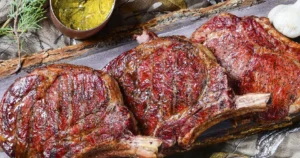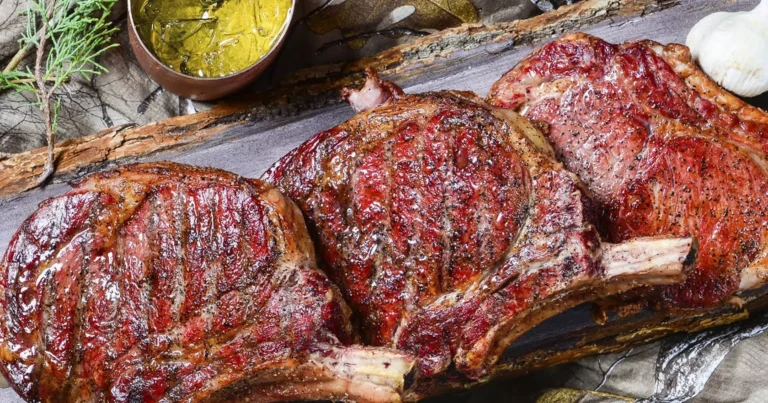There’s something wonderfully satisfying about a perfectly baked potato. Crisp, golden skin with a fluffy, steamy interior, ready to be topped with your favorite ingredients—baking a potato is a simple pleasure that can be the foundation of countless meals. Whether you’re new to the kitchen or a seasoned cook, mastering this culinary basic is a must. Let’s take a deep dive into how to bake a potato like a pro, ensuring delicious results every single time.
The Importance Of The Right Potato
When it comes to baking, potatoes are not made equal. Idaho potatoes, sometimes referred to as russet potatoes, are the best option because of their low moisture level and high starch content. This combination results in the ideal texture: a light and fluffy interior surrounded by crispy skin. Avoid waxy varieties like red or Yukon gold potatoes, as they tend to hold their shape and moisture, which isn’t conducive to the fluffiness you’re aiming for.
Prepping The Potato: A Critical Step
Proper preparation is the foundation of a perfectly baked potato. Start by washing your potatoes thoroughly under running water. Scrub away any dirt with a vegetable brush, as the skin is edible and holds much of the flavor. After cleaning, use a kitchen towel to pat the potatoes dry.
Dry skin is crucial for achieving that signature crispiness. If moisture lingers on the surface, it can steam the potato rather than bake it, leaving the skin soft. While drying, preheat your oven to 425°F (220°C)—the ideal temperature for even cooking and a golden-brown finish.
Pricking The Potato: Why It Matters
Before placing your potatoes in the oven, don’t forget to prick them a few times with a fork. This small action has a crucial function: it lets steam out while the potato cooks. Without these small vents, the trapped steam can cause your potato to burst open in the oven, creating a mess and disrupting the cooking process.
To Wrap Or Not To Wrap?
One of the most debated aspects of baking potatoes is whether or not to wrap them in aluminum foil. If you crave a soft, tender skin, wrapping them is the way to go. However, if crispy skin is your goal, skip the foil. Wrapping traps moisture, which prevents the skin from crisping up. The best way to bake potatoes is on the oven rack or a parchment-lined baking sheet.
Seasoning The Skin
While the potato itself is delicious, the skin can be elevated with a touch of seasoning. After drying, rub the potatoes with a light coating of olive oil. This helps the skin crisp up while adding a subtle richness. Season with a big teaspoon of kosher salt, which adds a delicious crunch to the skin and improves flavor. If you’re feeling adventurous, try adding a dash of garlic powder, paprika, or freshly cracked pepper for an extra layer of flavor.
Baking Time And Temperature
Bake your prepped potatoes at 425°F (220°C) for 45–60 minutes on the oven rack or baking sheet. The size of the potatoes determines the precise timing. Larger potatoes may need closer to an hour, while smaller ones may be done in 45 minutes.
To test for doneness, insert a knife or skewer into the thickest part of the potato. If it slides in easily with no resistance, your potato is ready. You can also give the potato a gentle squeeze (using an oven mitt, of course)—a perfectly baked potato will feel soft and give slightly under pressure.
Serving Your Perfectly Baked Potato
Once baked, it’s time to serve your potatoes while they’re still hot. Use a knife to make a lengthwise slit across the top, then gently press the ends of the potato inward to fluff up the interior. This creates a perfect pocket for toppings.
Flash news:erome
The beauty of a baked potato lies in its versatility. A simple topping of chives, a dollop of sour cream, and a dab of butter will do. For something heartier, pile on shredded cheese, crispy bacon bits, or steamed broccoli. If you’re looking for a full meal, load it up with chili, pulled pork, or a dollop of creamy avocado for a modern twist.
Tips For Pro-Level Potatoes
For restaurant-quality baked potatoes, a few extra tips can make a difference. First, try baking your potatoes on a wire rack placed over a baking sheet. This arrangement guarantees even cooking and crispy skin by distributing hot air around the potato. Secondly, if you’re cooking multiple potatoes, leave enough space between them to prevent steaming. Finally, resist the urge to microwave your potato. While faster, microwaving won’t give you the same crispy exterior and fluffy interior as baking.
Conclusion
Although baking a potato might seem easy, it takes skill and attention to detail to get it just right. By choosing the right potato, preparing it correctly, and baking it with care, you can create a dish that’s as comforting as it is versatile. Whether it’s a side dish or the star of the meal, a perfectly baked potato is a timeless classic that never disappoints.










